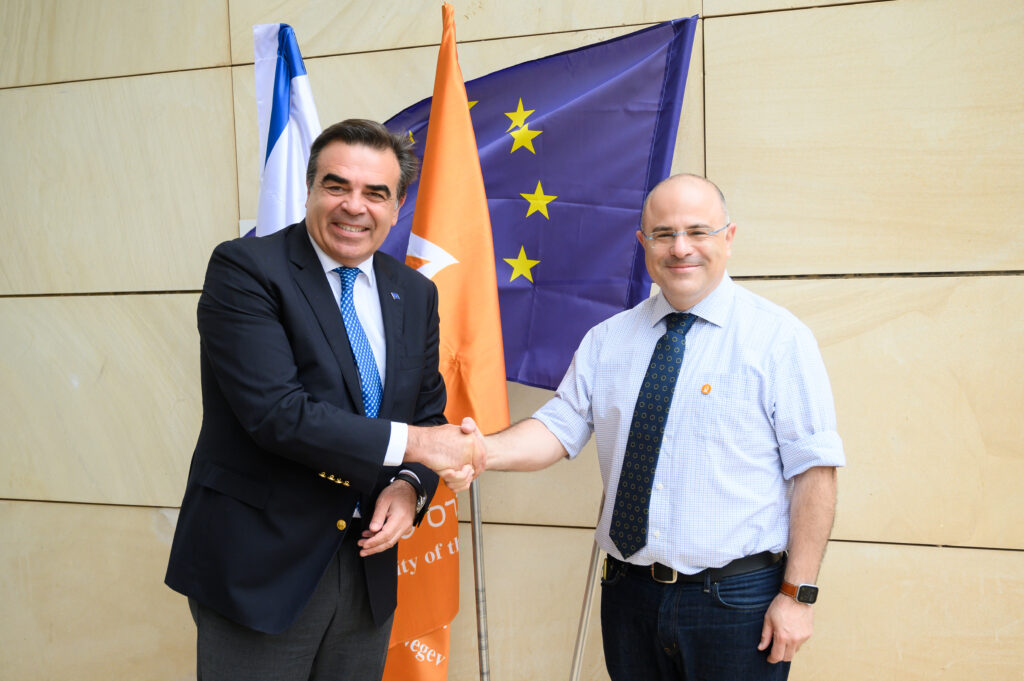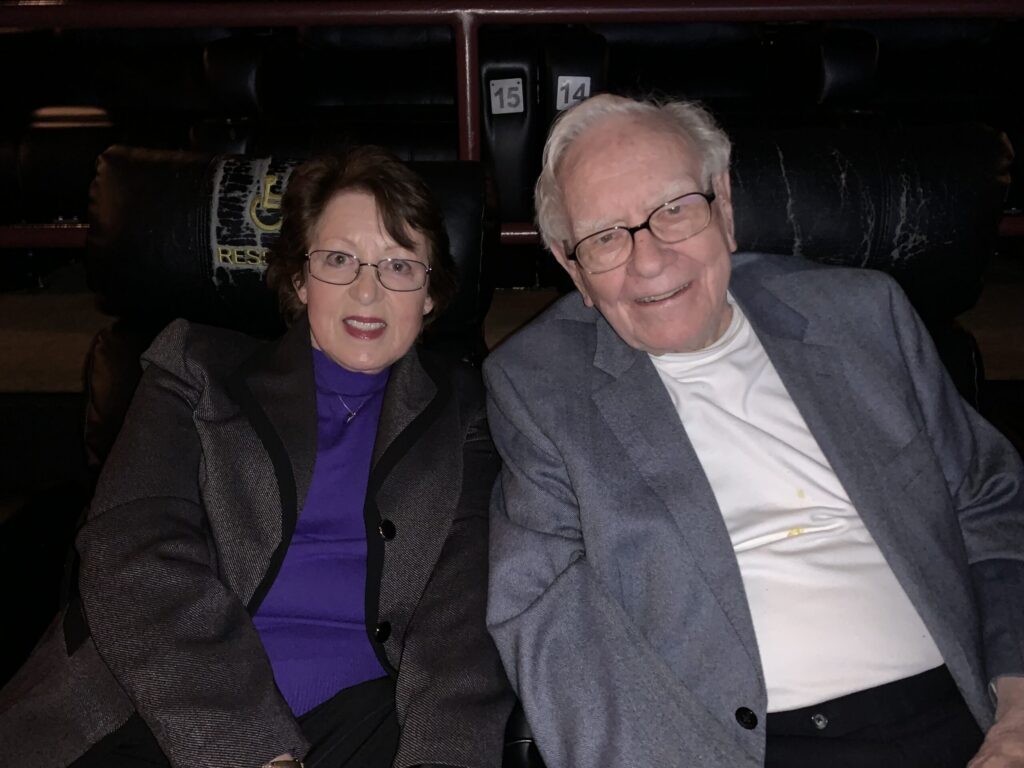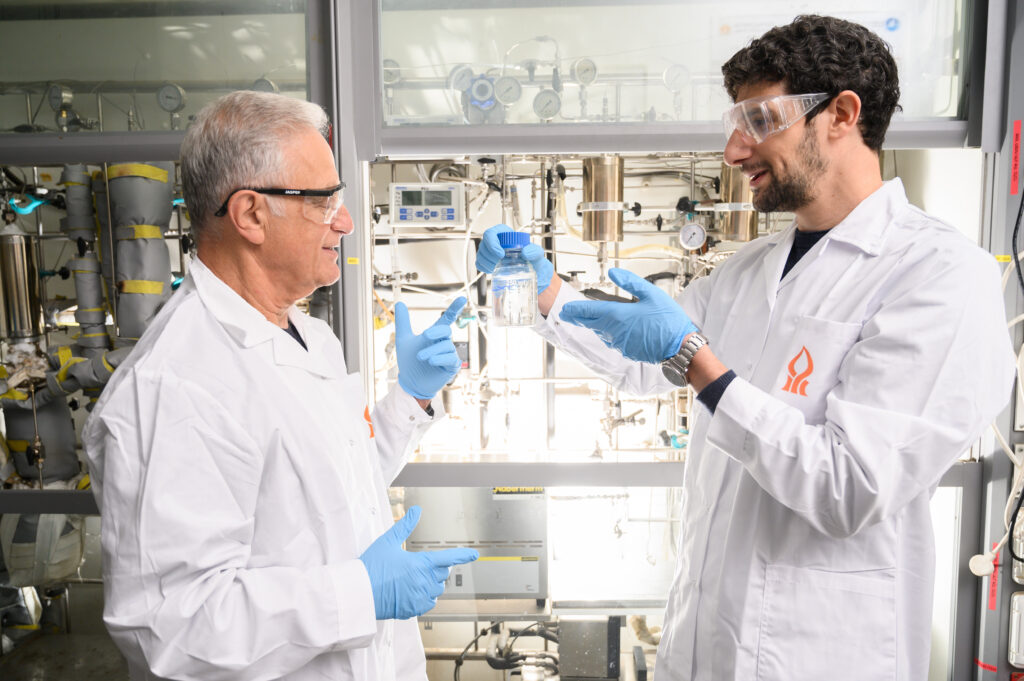
Solar Energy Project Enters Farm Phase
Solar Energy Project Enters Farm Phase
March 24, 2009
Alternative Energy, Business & Management, Desert & Water Research
 ZenithSolar officially announced plans Sunday for the next step in its electric-thermal hybrid solar power system—a solar farm at Kibbutz Kvutzat Yavne, which will be dedicated on April 26.
ZenithSolar officially announced plans Sunday for the next step in its electric-thermal hybrid solar power system—a solar farm at Kibbutz Kvutzat Yavne, which will be dedicated on April 26.
Green Prophet recently reported on ZenithSolar’s expansion of its pilot concentrated photovoltaic (CPV) system, which I wrote about after hearing Ben-Gurion University Professor David Faiman discuss his involvement with the project in Los Angeles last November.
The CPV system is different from the flat photovoltaic (PV) solar panels you find on people’s homes today. For starters, it’s shaped like a satellite dish. Rows of small glass squares that line the dish reflect sunlight—with 1,500 times the intensity—onto a generator that’s set directly in front of the dish.
The generator can absorb more than 70 percent of the solar energy (versus the 10 percent to 13 percent that PV panels get) and a water-cooling system keeps the tiny generator from being fried at about 1,800 degrees Fahrenheit. The hot water being piped away from the generator can be used for industrial or residential purposes.
A prototype unit has been running for two years in Faiman’s backyard, and two functioning dishes at the kibbutz will soon be joined by another 22, which were under construction during my visit.
When the system is working, the dishes produce no more heat than the local ambient temperature. But without a functioning generator, the heat pouring off the dish was dramatic (consider a beach parking lot in the middle of summer and kick it up a notch).
During the press event on Sunday, a colleague traveling with me was standing too close to one of the incomplete dishes and his hair nearly caught fire – smoke was literally rising from his head. (A warning for repair folk who might be servicing ZenithSolar systems in the near future: consider wearing a hat.)
According ot ZenithSolar founder and CEO Roy Segev, CPV is being designed as a competitive system. He says one major hindrance that stands in the way of PV solar energy (besides the low amount of energy generated) is the need for government subsidies to make the system affordable.
“When I first met Professor Faiman, approximately three years ago, we had a discussion about the problem of PV,” Segev said. “We understood that this was not a good solution. We need to have a solution that is economical.”
Segev won’t discuss price yet, probably wanting to avoid the problem of sticker shock in a down economy. He’s framing it this way: You’ll have it paid off within five years and the warranty is 15 years. The CPV system would offset nearly 70 percent of your energy needs (which includes both electricity and hot water), which is more than can be said for PV.
During our conversation last November, Professor Faiman told me that residential neighborhoods would be “a stupid place for” CPV. But ZenithSolar is envisioning residential models to compliment what will undoubtedly be a mostly industrial product.
One of my concerns with the system still is light pollution, especially in residential neighborhoods. Given the driving hazard of sunlight reflected onto the street from glass buildings, wouldn’t a residential or industrial CPV system have a similar impact?
While standing at the solar farm on Sunday, the same unfinished dish that nearly fried my colleague’s hair was also shining sunlight directly into my eyes.
Not a problem, says Ilan Lozovsky, COO of ZenithSolar. The dish, which pivots, will be programmed to follow the sun, so most times the dish will be pointed straight up. In other words, as long as it’s functioning this won’t be an issue.
As far as this being a hazard for aircraft, Lozovsky says that since the mirrored glass is concentrating the light on the generator, the dish will look like a black spot from above, nothing more.
geekheeb is a blog of the Jewish Journal of Los Angeles. Adam Wills is participating in Americans for Ben-Gurion University’s Fourth Annual Murray Fromson Media Mission.



